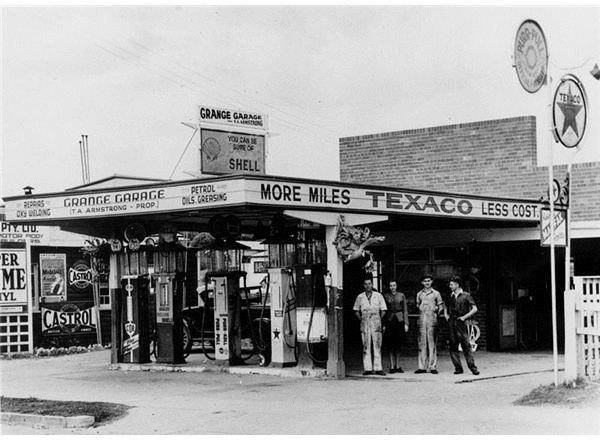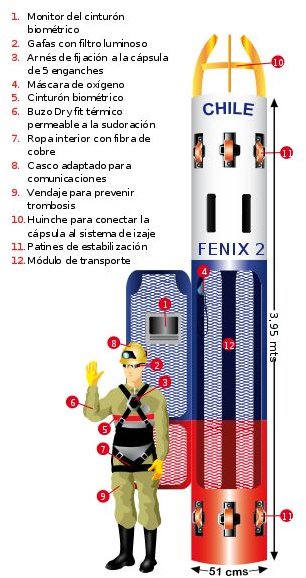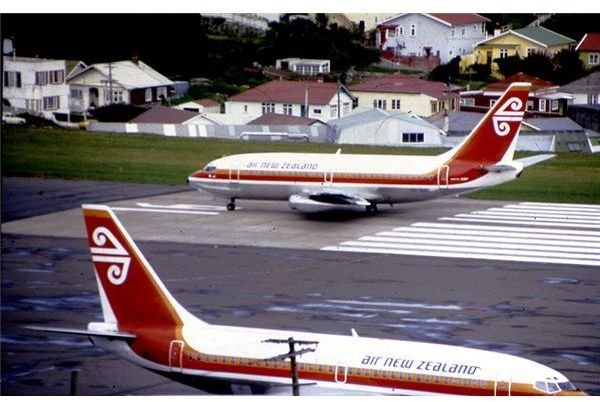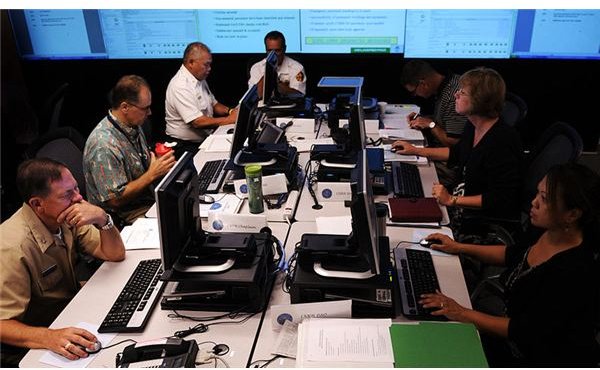Great Success Stories in Crisis Management
Studies about crisis management cannot be complete without citing actual crisis responses that have been effectively and successfully carried out. There are several success stories in crisis management that can be featured as examples; some are popular, while some are obscure.
Google has a long list of triumphs over attempts to discredit its reputation for the mere purpose of toppling the search engine giant from its number-one position. However, we have to consider the fact that the successes of this company’s crisis management plans owe mainly to its ability to maintain communication and disseminate information. It is a resource that is not readily available to all organizations.
The Johnson and Johnson cyanide-laced Tylenol is classic; it will forever be included in case studies since it embodies corporate management at its best. Hence, we searched for success stories that would represent different types of critical situations met with systematic plans of mitigating actions. These are cases in which skills, technology, and resources were harnessed intelligently at only a moment’s notice.
Learners should bear in mind that a crisis management plan does not comprise action plans for a specific incident. It is an outline of organized plans of actions on how strategies and technological tools will be mobilized and applied. The objective of this is to cope with the situation at hand from the initial point of occurrence through the point of damage control and abatement.
Those are the qualities we looked for in our featured stories of crisis management triumph, in which operational and communicational responses were effectively managed.
The Texaco Crisis and Reputation Management

Background
In 1994, Texaco, the oil industry giant, was already besieged with accusations of racial discrimination and was in fact facing a lawsuit filed by six of its African-American employees. The case was aggravated by a secretly tape-recorded exchange of conversations between Texaco executives that validated all issues of racial discrimination against the company. It was recorded by a personnel manager, who in later years was laid-off as part of the company’s downsizing move.
In 1996, the secretly-taped conversations containing negative and derogatory remarks against Texaco’s African-American and other minority employees was submitted in court by the said personnel manager. As a result, the unraveling of Texaco exeuctive’s racist stance outraged civic organizations, members of religious clergies, and the public as a whole, and they all called for an immediate boycott of Texaco.
As stock prices started going down, the beleaguered company’s CEO, Peter Biljur, took the first step by issuing a statement of public apology for the racist statements of Texaco’s employees. He announced their plans to prove to the nation that the sentiments of the erring Texaco officials and employees were not shared by the entire company.
The Communication and Response Strategies by Texaco
The strategies implemented included responses to institute corrective actions, to bolster its reputation, acknowledge the humiliation, and pinpoint the group or persons responsible.
-
CEO Biljur acknowledged the violation of the law and core values of the organization. He apologized to Texaco’s nineteen thousand employees, to their families, and to the entire nation; the CEO admitted being shamefaced by the revelations about some of his company’s senior executives.
-
The involved Texaco executive officials and employees were suspended with pay, pending the investigations; their health and retirement benefits were cut-off, including those of the personnel manager who handed over the tape. This denoted that the latter was not exempted from disciplinary measures for being part of the taped-conversation, despite being instrumental to the revelations of the recorded exchange of racist remarks.
-
Texaco’s senior executives were tasked to visit all branches, sites, and outlets of the company to personally apologize to all the employees and dealers.
-
Lawyers outside of Texaco Company were hired to negotiate the settlement of the ongoing racial discrimination lawsuit and the added class-action lawsuit filed by the oil giant’s minority employees.
-
Texaco hired Uniworld Group, an American-African-owned advertising company that undertook the challenging task of convincing sellers, consumers, and franchise-holders that the oil company will take its corrective action beyond what the court had mandated. The company intended to uphold the laws against racial discrimination as a lifetime commitment.
Next Page: The outcome of Texaco’s crisis management response and the success story behind Chile’s Mine Disaster and Rescue Operations.
The Texaco Crisis and Reputation Management (continuation)
The Outcome of Texaco’s Crisis Management Response
In no time at all, from November 1996 to January 1997, Texaco’s blue-chip stock regained its footing on the stock market trading floor. CEO Biljur was able to get the support of other blue-chip giants who helped by giving Texaco the leverage it needed, while the former was making peace with the public. Texaco’s shares of stock went down to only $1.50 for a brief period.
The notable Reverend Jesse Jackson lauded CEO Biljur for his positive actions, because despite the financial turmoil facing the company during that time, owing to deregulation and natural gas issues, the chief executive still gave the racial discrimination issue his personal attention and top priority.
The lawsuits were settled and ended with only $176 million in back pay and amicable settlements. Everyone agreed that this amount would have been greater if not for the company’s swift and decisive actions spearheaded by its CEO.
Today, after more than a decade, Texaco remains true to its commitment and has gone beyond the employees’ and public’s expectations. The erring officials and employees have long been fired after the cases were settled. Managers are subjected to 360-degree annual performance appraisals, which include their participation in eradicating any racial discrimination issues within their areas of responsibilities. Many have become impressed at how Texaco carries on with its commitment even during the height of economic crisis.
The Chile Mine Disaster and Rescue Operations

Background:
August 2010 saw the newly elected Chilean President Sebastian Pinera and his Mining Minister, Laurence Goldborne, subjected to a test of their professional and leadership skills, after barely assuming their posts in March of the same year.
Thirty-three miners were trapped inside the San Jose gold & copper mine for 69 days at 2,300 feet deep, about 5 kilometers away from the mine entrance. Initially, however, no one knew exactly where the miners were located. The first rescue operation through a ventilation shaft failed when the shaft itself collapsed.
Chile’s Crisis Management Response
President Pinera decided to personally direct the communications aspect of the rescue operations to give his mining minister a more focused mindset in carrying out the rescue mission. The Chilean president took charge of communication responses, i.e. handling the press interviews and in getting hold of the professionals and technological experts that the international community could provide. The mining minister, on the other hand, was at the helm of the actual rescue operation responses. These two gentlemen were highly experienced as former corporate executives armed with MBA degrees from America’s top universities.
-
The Chilean president was on top of the disaster situation by being available at moment’s notice to approve all proposals. His initial step was to make a public commitment that they would see the operation through, at all costs, without let-up and with the best professional and technological help available.
-
On the other hand, the mining minister arrived at the disaster site within 24 hours and stayed there to organize what turned out to be a chaotic conglomeration of miners’ families, reporters, volunteers, and an assortment of organizations that wanted to offer their expertise and know-how.
-
He gathered all the volunteers, clearly defined the situational problems, organized them into multiple teams, and gave each team an assigned task to perform.

-
He met with all the experts and listened to their input until the crisis was finally resolved, and he made clear that the kind of technological help needed can only be derived from the international community.
-
The two Chilean top officials and all the experts zeroed-in on the US National Aeronautics and Space Administration (NASA) as the best resource.
-
The minister had 33 modular units brought to the site, which served as temporary homes for each of the families of the thirty-three miners. In Chile, a family means more than just the spouses and their children but likewise includes an entire clan. Other family members were asked to go home, to give more room for the rescue operations that were about to take place.
-
NASA sent its deputy chief medical Michael Duncan to bring his expertise regarding long-duration and enclosed-space flights. The conditions that were being experienced by the miners were considered similar to those experienced by astronauts during space flights.
Next Page: The continuation of the response actions carried out by the Chilean rescue mission teams–the second of our featured success stories in crisis management.
The Chile Mine Disaster and Rescue Operations (continuation)

-
Precision Company, an oil-drilling service provider who had the technology to perform the hole-drilling operations via computer-aided equipment, was tasked to drill holes. The company initially used poke drills to allow the emanation of any foul smell that would indicate signs of decaying bodies. On the 17th day of the rescue operations, one of the poke drills came up with a note coming from the miners that stated all 33 workers were alive, safe, and sound.
-
While all these activities were going on, NASA Chief Duncan and his team of expert engineers designed and developed an escape capsule that was fully equipped with oxygen masks and monitoring equipment complete with audio and visual appendages.
-
Once the drilling company knew exactly where the miners were, they started drilling the escape hole at just about the right size, so that the escape capsule would fit and could be lowered to 2,300 feet deep. The hole was also used to bring down food, cots, and gadgets to keep the miners preoccupied and well aware of all the rescue efforts being developed and underway.
-
Prior to the actual day of the rescue, the capsule was tested and rescuers went down to prepare and organize all thirty-three miners.
-
Up to the very end of the mission, the team of President Pinera and Minister Goldborne saw to it that everyone and everything was organized.

(a) Paramedics of the Navy Special Forces were at hand in case of emergencies.
(b) Traffic going to the site was closed to allow the rescue helicopter pilots enough night vision and landing areas. Their task was to transport each worker to the nearest hospital for proper medical examination after each haul.
(c) Each of the trapped miners was made to take-in a high-calorie drink that would allow the miners to stand the spinning motion of the capsule as it ascended.
(d) The closest family of the ascending miners was brought nearer to the hole’s surface area as part of the welcoming party.
(e) The miners were brought up divided into three groups: The first was composed of the most skilled and expert in the group. This group was tasked to provide any information that would warn the NASA team of possible technical troubles that might crop-up.
(f) The second team comprised those who were considered the weakest in the group, while the third were those considered the strongest.
The whole world watched and applauded as each miner appeared, looking happy and in the best disposition. In this second example of success stories in crisis management, the head of Chile and his mining minister actually came out of their air-conditioned homes and offices to ensure that the operation was given the best attention and conditions that would ensure the success of the rescue mission.
Next Page: Air New Zealand’s Out-of-the Box Crisis Management Response - the third of our success stories in crisis management.
Air New Zealand’s Out-of-The Box Crisis Management Response

Background:
The third of our success stories in crisis management is quite off-beat, wherein a first-class national short-haul air travel provider resorted to humor to turn a crisis situation around.
Air New Zealand maintained a policy of keeping its lines of communication open with the press and the media. The company’s CEO, Rob Fyfe, was known for his willingness to answer all questions about the airline’s operations, including those of their plans to have an alliance with the Australian air company Virgin Blue.
The Attack Against Air-NZ’s Reputation
However, a New Zealand-based magazine called The Listener wrote recklessly about the proposed alliance by giving their editorial piece about Air NZ’s and Virgin Blue’s team-up as “Turbulence Ahead.” It blatantly stated that the airline was “determinedly downmarket on its Australian and Pacific routes” and that “this downgrading is a move geared toward budget standards in international short-haul air travel.”
This was clearly an attack on the reputation of Air New Zealand and the standards it tries hard to preserve as a highly reputable participant in the airline industry. Nonetheless, the company’s CEO Fyfe took a different route in taking care of the initial step of the company’s crisis management plan — the communication aspect.
AIR-NZ’s Crisis Management Response
Instead of releasing a press statement to deny or refute The Listener’s contentions, CEO Fyfe came out with a no-dialogue video at YouTube. The CEO’s reply was being translated into some form of comical sign-language. It was a direct counter-response that also pointed out the unethical attitude of the magazine writer for not listening to what was actually being said by CEO Fyfe during the interviews he granted.
The uniqueness of this airline’s response turned the tables instead against the magazine, while CEO Rob Fyfe’s no-dialogue video is still attracting viewers for its humorous context.
These success stories in crisis management are reflective of the competence and sincerity of those at the helm. Any mitigation plan can only be effective if the crisis management team members identified in the plan are selected based on their ability to come up with swift and intelligent strategies and decisions at a moment’s notice.
Reference Materials and Image Credit Section:
References:
- No More Crude at Texaco https://money.cnn.com/magazines/fortune/fortune_archive/1999/09/06/265322/index.htm
- Chile Mines Rescue https://www.cnn.com/SPECIALS/2010/chile.miners/index.html
- From the Listener Archive: Columnists May 15-21, 2010 Turbulence Ahead https://www.listener.co.nz/issue/3653/columnists/15408/turbulence_ahead.html
Image Credits:
- [Navy and civilian personnel provide operational support…](https://commons.wikimedia.org/wiki/File:US_Navy_100823-N-7498L-051_Navy_and_civilian_per sonnel_provide_operational_support_during_the_region_operations_center’s_Liberty_Champi on_exercise.jpg)
- [StateLibQld 1 146191 Workers pose at Grange Garage, Brisbane, ca. 1941](https://commons.wikimedia.org/wiki/File:StateLibQld_1_146191_Workers_pose_at_Grange_Gara ge,_Brisbane,_ca._1941.jpg)
- Sanjosemine ali 2010259 lrg
- Mina San José -Piñera con mensaje de mineros atrapados
- Esquema Fenix-minero
- MSJ.de
- Juan Aguilar with President Piñera
- Hybrid Air NZ NZNAC
